How TLM Works
Contents are extracted from the Advanced UVM sessions by Verification Academy.
TLM
TLM is all about communication through method calls
- A TLM port specifies the “API” to be used
- A TLM export supplies the implementation of the methods
Connections are between ports/exports, not components
Transaction are objects
Ports & exports are parameterized with the type of the transaction being communicated
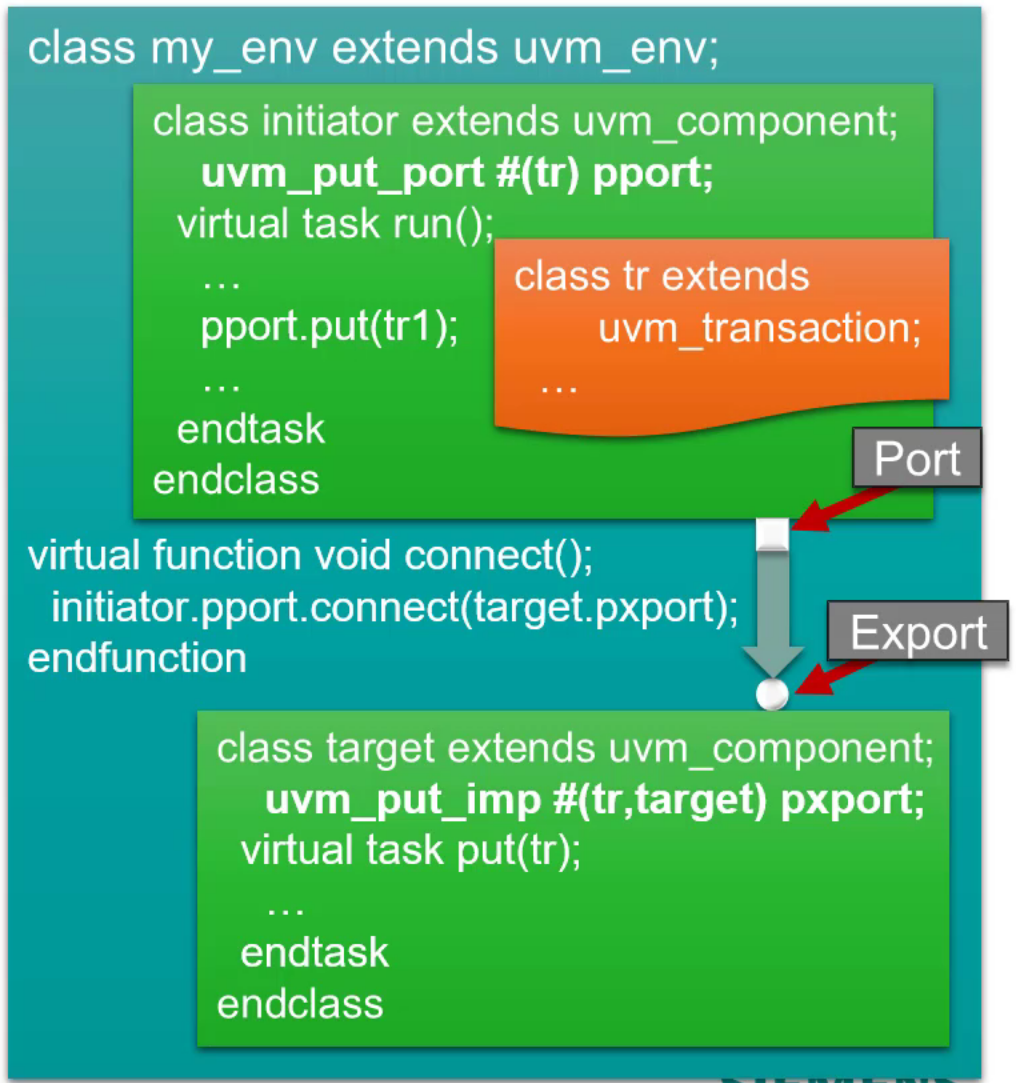
Factory can be used to change the component’s type, as long as it is similar type and have the same set of interfaces
Hierarchical connections
Port-to-Export
port.connect(export);
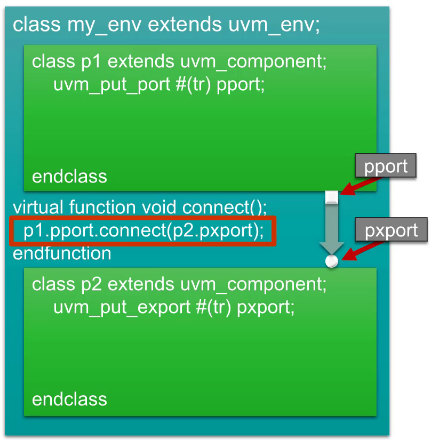
Port-to-Port
child.port.connect(parent_port);
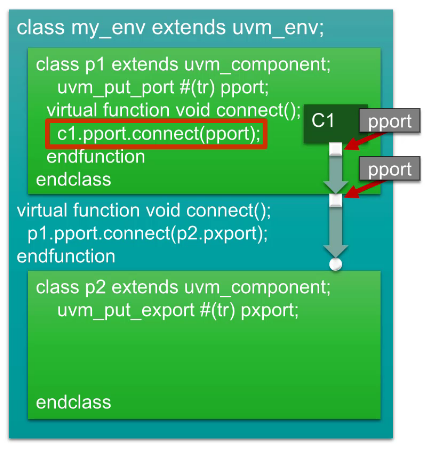
Export-to-Export
parent_export.connect(child.export);
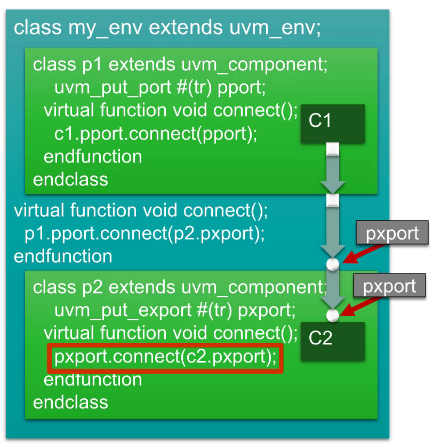
Last export is actually an ‘imp’
The source use the interface
The target supply the implementation of the interface
The implementation contains the transaction type and type of the component contains the implementation
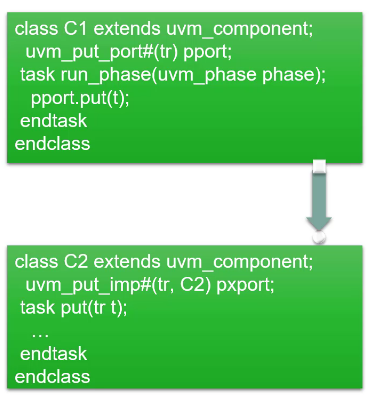
The transaction flow from C1 → C2 and C2 will do something with it
⇒ Factory override is also possible, C2X having different implementation on the put task
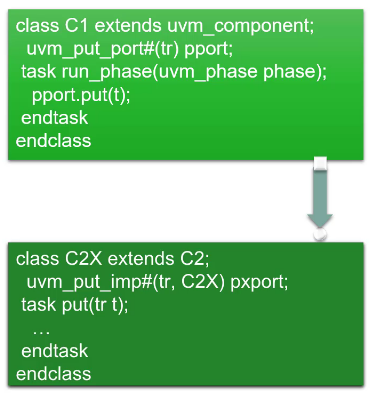
Analysis Communication
Analysis ports support 1:n connections
- All
write()functions called in zero time
Used by coverage collectors and scoreboards
uvm_subscriberhas built-inanalysis_export
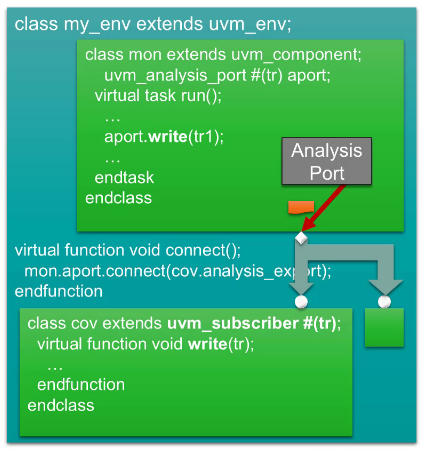
Every components connect to the
analysis_portwill have an implementation of thewrite()methodWhen one subscriber made one change on the transaction, all other subscribers will know the changes
Recommended to make a copy of the transaction handle when implementing the
write()method
Analysis of multiple streams
The
uvm_subscriberonly support single connection toanalysis_port
Choice 1: Use imp suffixes defined via macro
- Declare macros outside of component
- Instantiate suffixed imps
- Implement
write_SUFFIXmethods
Write methods are functions
- Can’t synchronize between streams
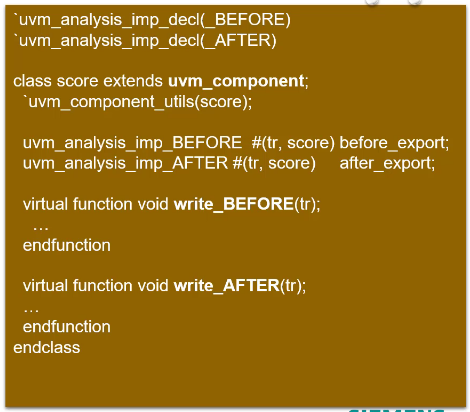
Choice 2: Use embedded FIFOs (recommended)
- Declare analysis exports
- Connect exports to FIFOs
run_phase can now actively pull from FIFOs
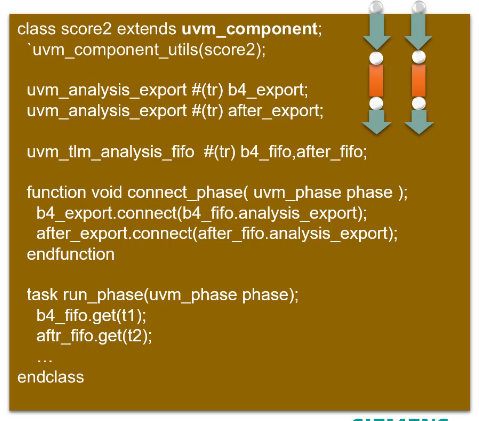
TLM2 in UVM
TLM2: SystemC’s feature
TLM2 based on a generic_payload transaction base class
- TLM2 uses sockets, which contain both a port and an export
- Pass-by-reference (pass-by-value in TLM1)
- The generic payload can be extended to model any kind of transaction
Connections are between sockets, just like ports/exports
- Initiator socket connects to target socket

Blocking transport
Completes the entire transaction within a single method call
- Uses the
b_transport()task
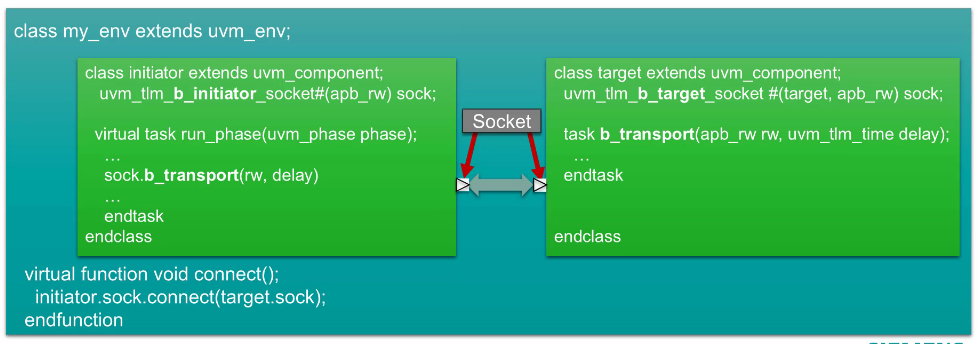
Nonblocking transport
Bidirectional communication
- Uses the
nb_transport_fw()andnb_transport_bw()functions - Initiator implements the
nb_transport_bw() - Target implements the
nb_transport_fw()
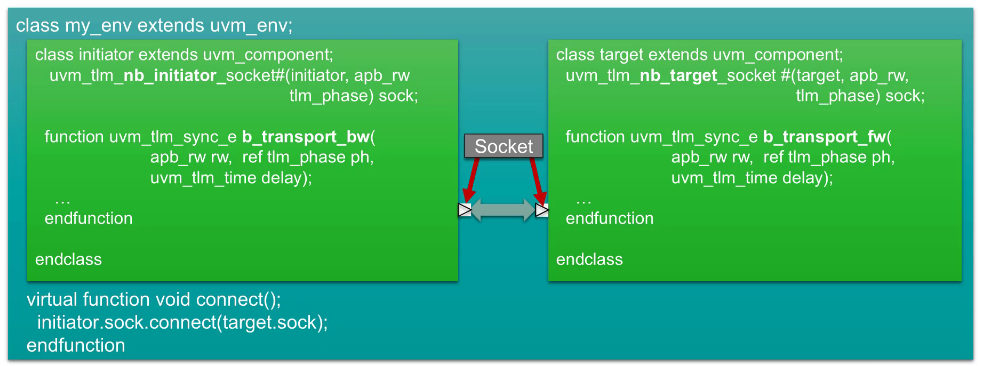
uvm_tlm_sync_e: Indicates the status of the transaction
Pass through sockets
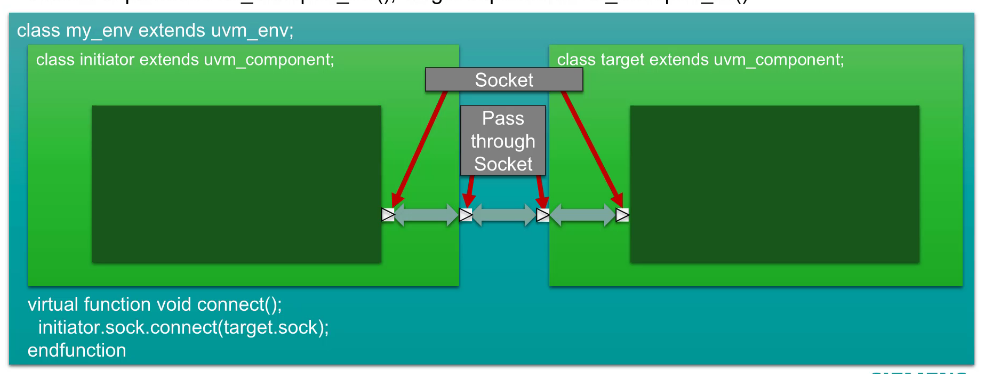
Generic Payload
All elements are rand and protected
Must use predefined virtual accessor methods
Defined to be either READ, WRITE or IGNORE command
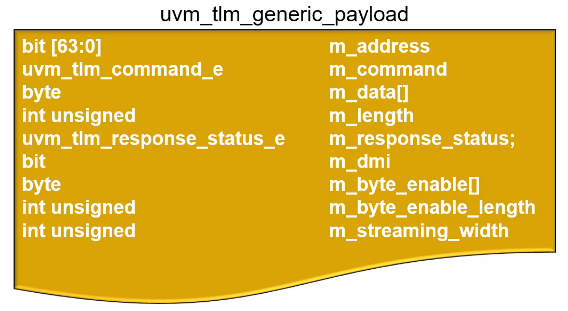
Summary
Every port must eventually connect to an implementation (imp)
Mostly only use 2 port/export connections:

All TLM connections go from ‘origin’ to ‘destination’
port.connect(export);child_port.connect(parent_port);parent_export.connect(child_export);